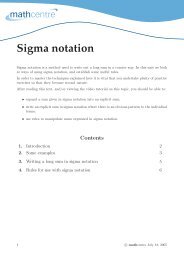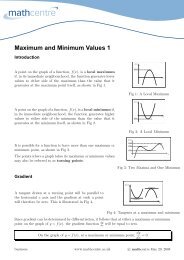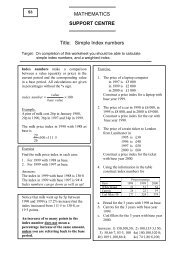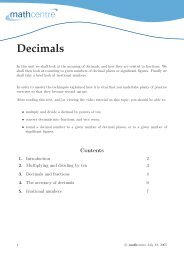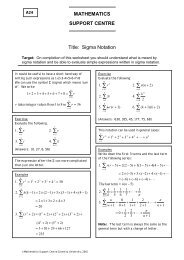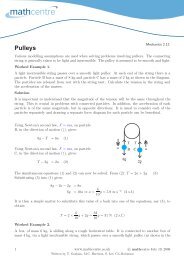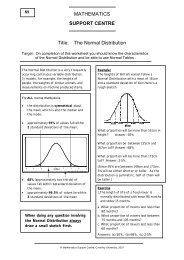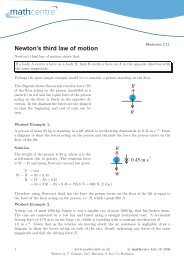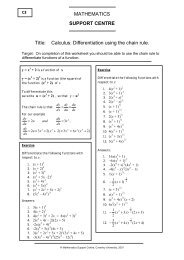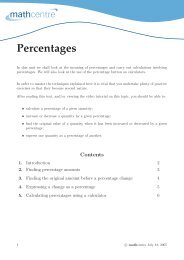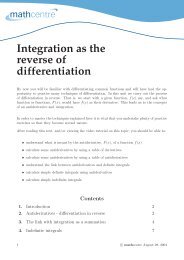Cartesian components of vectors
Cartesian components of vectors
Cartesian components of vectors
Create successful ePaper yourself
Turn your PDF publications into a flip-book with our unique Google optimized e-Paper software.
2. Vectors in three dimensions<br />
In three dimensions we have three axes, traditionally labelled x, y and z, all at right angles to<br />
each other. Any point P can now be described by three numbers, the coordinates with respect<br />
to the three axes.<br />
z<br />
O<br />
y<br />
x<br />
Now there might be other ways <strong>of</strong> labelling the axes. For instance we might interchange x and<br />
y, or interchange y and z. But the labelling in the diagram is a standard one, and it is called a<br />
right-handed system.<br />
Imagine a right-handed screw, pointing along the z-axis. If you tighten the screw, by turning it<br />
from the positive x-axis towards the positive y-axis, then the screw will move along the z-axis.<br />
The standard system <strong>of</strong> labelling is that the direction <strong>of</strong> movement <strong>of</strong> the screw should be the<br />
positive z direction.<br />
z<br />
O<br />
y<br />
x<br />
This works whichever axis we choose to start with, so long as we go round the cycle x, y, z,<br />
and then back to x again. For instance, if we start with the positive y-axis, then turn the screw<br />
towards the positive z-axis, then we’ll tighten the screw in the direction <strong>of</strong> the positive x-axis.<br />
Key Point<br />
A right-handed system is a set <strong>of</strong> three axes, labelled so that rotating a screw from the positive<br />
x-axis towards the positive y-axis will tighten the screw in the direction <strong>of</strong> the positive z-axis.<br />
3 c○ mathcentre July 18, 2005



